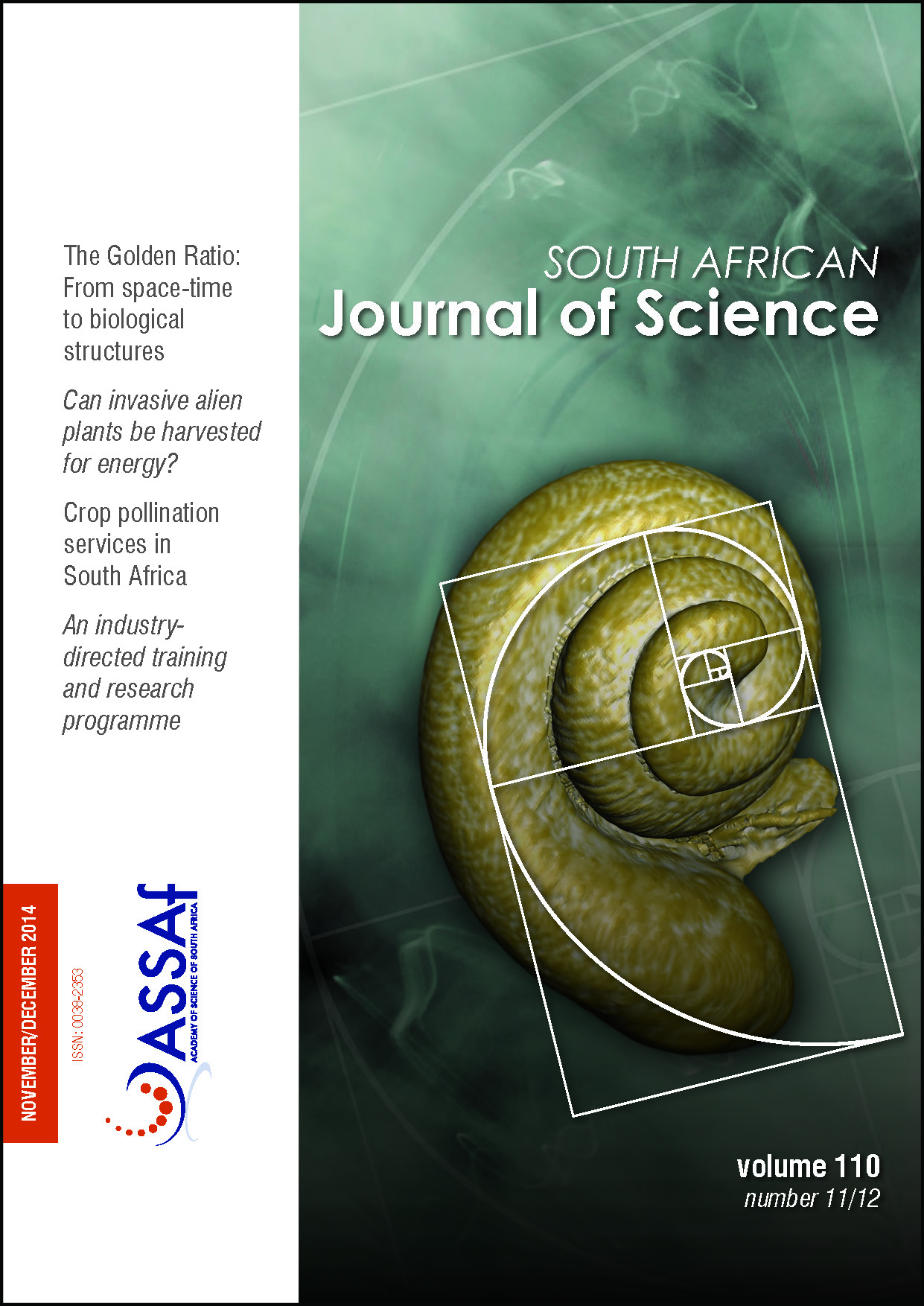Biofilm formation in surface and drinking water distribution systems in Mafikeng, South Africa
DOI:
https://doi.org/10.1590/sajs.2014/20130306Keywords:
Aeromonas, biofilm, drinking water distribution system, Pseudomonas, total coliformsAbstract
Poor quality source water and poorly treated reused wastewater may result in poor quality drinking water that has a higher potential to form biofilms. A biofilm is a group of microorganisms which adhere to a surface. We investigated biofilm growth in the drinking water distribution systems in the Mafikeng area, in the North- West Province of South Africa. Analysis was conducted to determine the presence of faecal coliforms, total coliforms, Pseudomonas spp. and Aeromonas spp. in the biofilms. Biofilms were grown on a device that contained copper and galvanised steel coupons. A mini tap filter – a point-of-use treatment device which can be used at a single faucet – was also used to collect samples. Scanning electron microscopy demonstrated that multi-species biofilms developed on all the coupons as well as on the point-of-use filters. Galvanised steel and carbon filters had the highest density of biofilm. Total coliforms, faecal coliforms and Pseudomonas spp. were isolated from raw water biofilm coupons only. Aeromonas spp. and Pseudomonas spp. were isolated from filters. The susceptibility of selected isolates was tested against 11 antibiotics of clinical interest. The most prevalent antibiotic resistance phenotype observed was KF-AP-C-E-OT-K-TM-A. The presence of virulence genes was determined using the polymerase chain reaction. These results indicate that bacteria present in the water have the ability to colonise as biofilms and drinking water biofilms may be a reservoir for opportunistic bacteria including Pseudomonas and Aeromonas species.
Published
Issue
Section
License

This work is licensed under a Creative Commons Attribution 4.0 International License.

All articles are published under a Creative Commons Attribution 4.0 International Licence
Copyright is retained by the authors. Readers are welcome to reproduce, share and adapt the content without permission provided the source is attributed.
Disclaimer: The publisher and editors accept no responsibility for statements made by the authors
How to Cite
- Abstract 748
- PDF 615
- EPUB 238
- XML 284













.png)